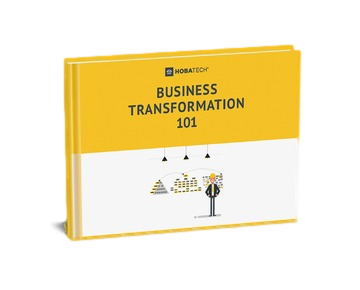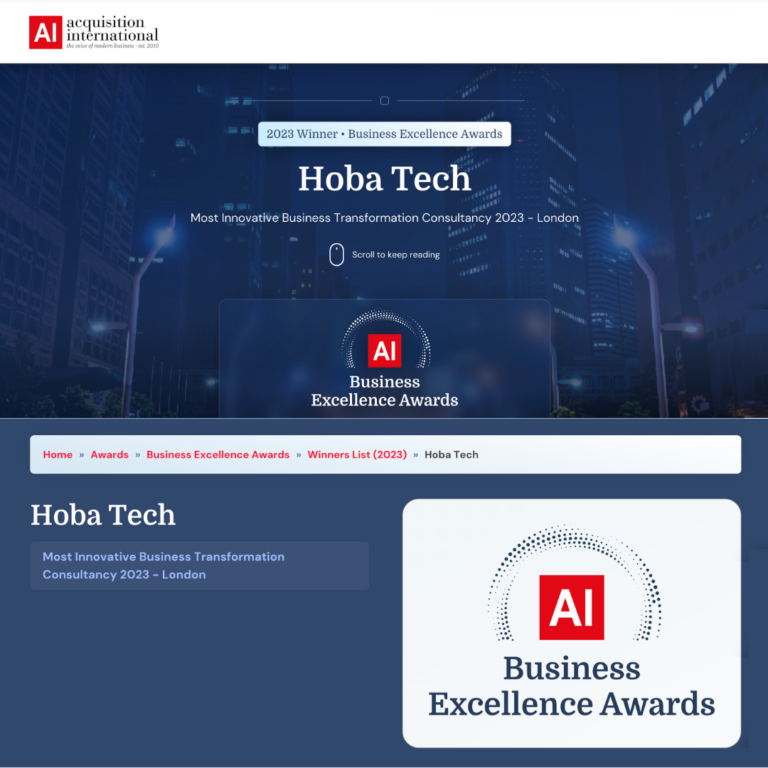Welcome to our latest blog post, “Effective Business Design is Not Guess Work: 5 Steps to Get it Right”.
In this post, we delve into the importance of effective business design in the context of business transformation.
We emphasize that design alone will not suffice for successful business transformation. Instead, a systematic approach is required, and we provide a 5-step process to ensure successful business design.
Heres what we’ll cover (click the links to skip to the section below):
NB – Click to expand images 📸
Table of Contents
- Step 1 – Know Your Audience (and Their Pain Points)
- Step 2 – Make Sure You Specifically Address Each Pain Point
- Step 3 – Know Where, When and How Long You Have to Present Your Case
- Step 4 - Share Early Drafts With the Sponsor to Check the Direction, Tone and Content
- Step 5 - And Finally – Get Right Down to Implementation!
In the first section, we discuss the importance of developing a clear and comprehensive blueprint for your corporate strategy before implementing any changes. This blueprint will serve as a guide for the transformation process and ensure that the changes align with your organization’s objectives.
Next, we move on to identifying the pain points and improvement opportunities within your organization. Understanding these areas will help you address and improve them during the transformation process.
In the third section, we stress the importance of stakeholder involvement in any business transformation. We provide insights on how to engage stakeholders at all levels and ensure their buy-in and support for the transformation process.
The fourth section is dedicated to designing the target operating model (TOM) that addresses the pain points and improvement opportunities identified in the previous steps. This includes designing the structure, processes, and systems that will enable the desired transformation.
Finally, we discuss how to implement the design of the target operating model. This involves developing plans and roadmaps to implement the physical TOM and ensure that all stakeholder concerns and requirements are addressed.
We hope that this post will provide you with valuable insights into effective business design and guide you through your business transformation journey.
Let's begin!
With the current pandemic causing drastic changes in the corporate landscape, it has become crucial for businesses to reevaluate their ways and redesign their business model in order to survive. Identifying what’s next should be the first step in this transformation. Before you decide to implement change, you need to first develop an effective blueprint for your corporate strategy.
Let’s first understand what the term Business Design, commonly referred to as the Target Operating Model (TOM), means and how it can help you bring forth change that is effective and fruitful.
Identify the Current Scenario
The first thing you need to do is to determine your current standing. Are you heading towards great losses? In this current client it might be hard to see, today – Operations ‘could manage’ but for how long? If you are incurring such losses, what are the main reasons behind these? Ask yourself – what, in the first place, inspired you to bring about a drastic change? In order to create an effective roadmap for the remodeling, you need to put on your business lens and identify the pain points that have been hurting your business.
The Target Operating Model (TOM)is basically the blueprint of a company’s vision that aligns its key objectives and gives an overview into the company’s internal and external elements – resources, vision, mission, key objectives, organisational or functional structures and competition. This enables businesses to understand what’s next and how the business can sail smoothly through the obstacles with a sound operating model in place.
Once these pain points have been pinned down, they can then be addressed effectively, ensuring the business achieves success in its future operations. Here is the catch,although this Target Operating Model (TOM) helps realign the businessprocesses keeping the future prospective in mind –it needs to be flexible to adopt to the unknown future. The TOM will mainly create a flexible foundation for the business to execute its initiatives successfully and sustainably.

6-Steps to Business Transformation Success
WHAT THE TOP 30% OF ORGANISATIONS KNOW THAT YOU DON’T 👉

🌟 "Design thinking 💡✨ is not just about aesthetics; it's about understanding the needs of your customers and creating solutions that meet those needs" 💼 #DesignThinking #CustomerCentric
Heath Gascoigne Tweet
Recognise and Address the Problems Keeping the Future Prospects in Mind
Remember, you can only define the pain points when you have a thorough understanding of the current scenario. In order to do so, you must have your Current Operating Model (COM) in front of you. Only then you will be able to see where you need to bring change to achieve your future targets or goals.
The TOM, on the other hand, will define what changes need to be done to the business strategy, mission, vision and goals in order to achieve a successful transformation.
Remember, you need to evaluate and address the current as well as the potential pain points for this design to work. Before you begin working on the design, you need to answer the following 3 questions:
- Who’s pain points are you addressing?
- What does the future look like? And
- How do you get it approved?
We have already addressed questions 2 and 3 in detail in the previous posts here and here.
In this post we are going to be addressing the 3rd question, arguably the most important one,‘how do you get it approved’?
After all – it’s based on this decision that transformations are agreed by the board (or executive leadership team) to proceed. It is also the first step in the process that sets the chain of events into motion of whether in 6-months to 2-years later you look back and wonder where it all went right (or it all went wrong) given that 70% of Digital Transformations end up in a failure.
Just like a property investor when they make their next purchase, the profit or loss they incur from the project is determined by the price they pay, from the decision they made – not at the fitting or fixtures they purchased for the property or how well they staged it for sale at the end.It all boiled down to the decision they made, when they decided on the price at the start of the process when they purchased the property (key point: “the decisions made at the start of the process”)
So, how do you make sure you get that TOM approved? As a Business Owner, Leader or Consultant, you are going to have to get agreement on your TOM, and that is from your key stakeholders, who represent their respective areas of the Organisation, which has their individual pain-points, needs and concerns. Your TOM needs to address those needs and concerns, so how do you do that?

🌟"A well designed business is like a well-oiled machine It operates smoothly, efficiently, and delivers exceptional results" 🏭🔧. #BusinessDesign #Efficiency
Heath Gascoigne Tweet
Here are the 5 Fail-Proof Steps You Need to Follow!
Step 1 – Know Your Audience (and Their Pain Points)
Are you targeting the right audience? Or are you even targeting them right? Your customers are an integral part of your business – so understanding if you’re meeting their demands as perfectly as possible should be your very first priority. When designing the new model, ask yourself if your products/offering are addressing your audience’s pain points. The pain points are the problems that your potential customers are experiencing. You need your customers to relate with you before you can start selling. The best way to do so is to directly reach out to them or mapping out your customer journey to see the loopholes.
For instance, Walmart saw how buyer’s felt overwhelmed when landing on the Amazon page and used this opportunity to cut down on the ‘decision fatigue’ for the buyers. Walmart saw the pain points of buyers wanting to make quick purchases without being bombarded by thousands of options – and hence introduced their new idea of “Less is More”, which involved providing the right products (targeted to their specific preferences) to the consumers faster in their expected prices. Needless to say, the idea was a huge success!
Step 2 – Make Sure You Specifically Address Each Pain Point
Though you may refer to the pain points as simple issues, but they’re actually grouped into multiple categories. To put it into simple terms, your customer’s pain points can either be financial, productivity-related, process-related and support-related – or all of the above. Your prospects might be spending too much on their current products (financial), or they might be wasting lots of time locating it (productivity), or they might want to improve their current processes (process), or they’re not getting the support they deserve throughout their customer journey (support).
While categorizing the pain points is a great start, most of these customer issues are layered and hence more complex. That’s why you need to adopt a holistic approach and put forth your TOM as a solution to not only one but all the problems they’re facing.
Word Stream did something similar when they found out that their users were have trouble managing their time, finding and retaining new clients and felt like the overall process was a bit too complex. They launched an all-star initiative and marketed it the very same way – addressing all their customer’s pain points with one single solution. And the results were quite impressive!
Step 3 – Know Where, When and How Long You Have to Present Your Case
Chances are you need to take your pack to your Board for presentation and you will have an agreed times lotto present your new model. Remember though, you don’t have all the time in the world,and so you have to be swift and concise. You need to make sure you address the key stakeholder’s pain points, and get the decision you are after – to proceed with your recommendation.
Create a plan to get the contents of the pack together, and assign roles to different sections.Understand your governance processes – your board will probably want papers submitted at least 1 week prior to the meeting to allow members enough time to review it and understand it, in order to make a decision on it.
You should(through the work you have done to resolve the concerns, painpoints and requirements for your key stakeholders) get around to the board members individually to understand their concerns and pain points, and ensure that you address those points in the pack, if you want to improve the chances of success on the day. Nothing worse than doing weeks, and sometimes months of work, to take it to the Board, to be thrown out and told to come back and ‘revise the numbers’ because of a ‘technicality’.
Step 4 - Share Early Drafts With the Sponsor to Check the Direction, Tone and Content.
The BEST advise we can give you here is to reiterate the key words, statements, objectives and benefits from the project or programme brief and business case – that kicked off the need for the development of the TOM in the first place.This shows that you are basing your design off an already agreed decision, that in the most part, would have been agreed upon by that same group.
Share with them the process you followed to get to that point – namely –
- The agreed Vision for the Organisation that you developed with the project team(agreed with the Sponsor)
- The governance process and framework you put in place to ensure you had the right people involved for decision making and consultation
- What process you used to understand the current state of the organisation - whether it was via zoom calls or face to face workshops
- Who were the attendees, what areas they represented, how you elicited their requirements and validated these were captured correctly
- And how your now design was developed, aligned to any industry best practice to ensure you had the latest thinking of building a scalable TOM that was agile enough to change as the future conditions change.
- But most importantly - provide options with your recommendation(which could be – do nothing, do the minimum, and maximum, and a fourth, if time and space allow, – a ‘gold plate’ version – which is the ‘ultimate option’ to show that if time and money was not an issue, what could be possible). This option however is really just an option to provide ‘choice’,which will almost certainly be ruled out by the board as ‘not reasonable nor practical’, but it would have served its purpose of making the other three options look more appealing as both reasonable and practical. Total win-win!
Step 5 - And Finally – Get Right Down to Implementation!
Business Architects are often criticized for not providing an appropriate route to implementation after all the hard work has been done. I wrote about this in a previous post. To be clear, coming up with a design and lobbing it over the fence to the ‘business’ and hoping they can implement it or implement it as designed, without providing a viable route to implementation is not doing the job. To be explicitly clear – that also includes, not creating a ‘finger in the air’ or ‘done on the back of fag packet’ implementation plan.
Depending on what stage your business case is – whether it was your Strategic Outline Case (SOC), Outline Business Case (OBC) or Full Business Case (FBC), I did a video on this here – you will provide the right level of detail and costings, including the change impact assessment across the people, process, technology and data elements across the business impacted by the change, and the degree of the impact, and how the change is going to be managed.
Wondering how your TOM will be implemented? Usually over a series of stages, the first being quick wins addressing immediate pain points, and building the foundations and building blocks for a solid strategy that ensures the business KPIs and ROIs are being met.
While you’re at it, make sure you do not take a big leap at once. Aim for baby steps and organise checkpoints along the way to make sure the key objectives are being fulfilled and the business is reaping the rewards of all the hard work that went into the entire process. Also, make sure to facilitate Benefits Realisation tracking and measuring to monitor how the implementation is going.This allows ample time for review and adjustments as and when required. Remember – the more flexible your business is, the better will be its ability to dodge the obstacles and prosper in the long run.
Did you know that Ford achieved a remarkable turnaround in profitability during the year 2006 after completely revamping their operating model? The company moved from standard regional units to a global model and set the stage for effective operations by identifying and addressing the internal (business-related) as well as external (customer-related) pain points. After losing a great chunk of the market share in the previous years, Ford was able to jump right back up through this commendable transformation!
Looking for the Best Training to deliver your Business Transformation? Search no more!
- 30-Day Money-Back Guarantee
- Risk FREE

🌟"Don't underestimate the power of iteration 🔄🔁. Refining your business design based on feedback and data-driven insights can lead to continuous improvement and long-term success. #Iteration #ContinuousImprovement
Heath Gascoigne Tweet
Conclusion
In this blog post, we have explored the importance of effective business design in the context of business transformation.
We have outlined a 5-step process to ensure successful business design and transformation, which includes defining enterprise architecture, developing an effective blueprint, addressing key issues, designing the target operating model (TOM), and implementing the design.By following these steps, organisations can avoid common pitfalls and increase their chances of a successful transformation.
Effective business design is not guesswork, but a systematic approach that requires careful planning, stakeholder involvement, and continuous management.
Wrap-up
We hope that this post has provided you with valuable insights into effective business design and its role in successful business transformation.
If you would like to learn more about HOBA Tech and our approach to business design and transformation, please visit our website.
If you have any questions or would like to discuss how we can help your organisation with its business transformation journey, please contact us.
We would be more than happy to assist you.
Thank you for reading this!
Sincerely,

Heath Gascoigne
P.S. If you want to join our Business Transformator community of 2,000+ like-minded Business Transformators, join the community on the Business Transformator Facebook Group here.
P.P.S. If you want to learn more about business transformation, check out The Business Transformation Playbook here.
For more information, visit https://hoba.tech/













